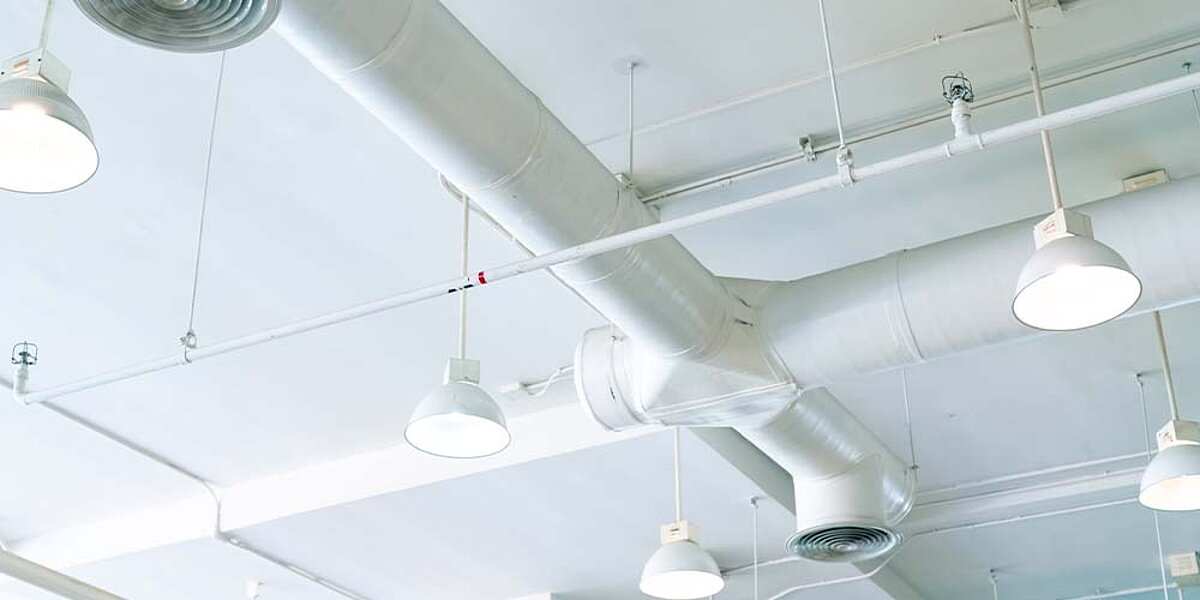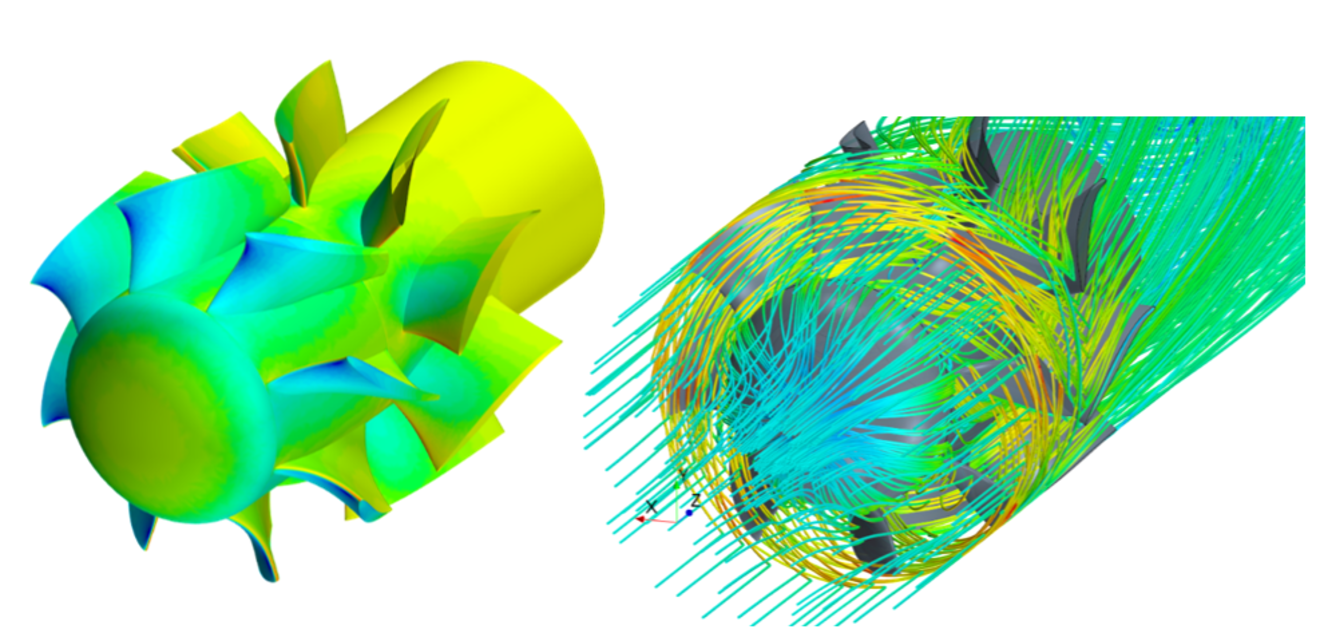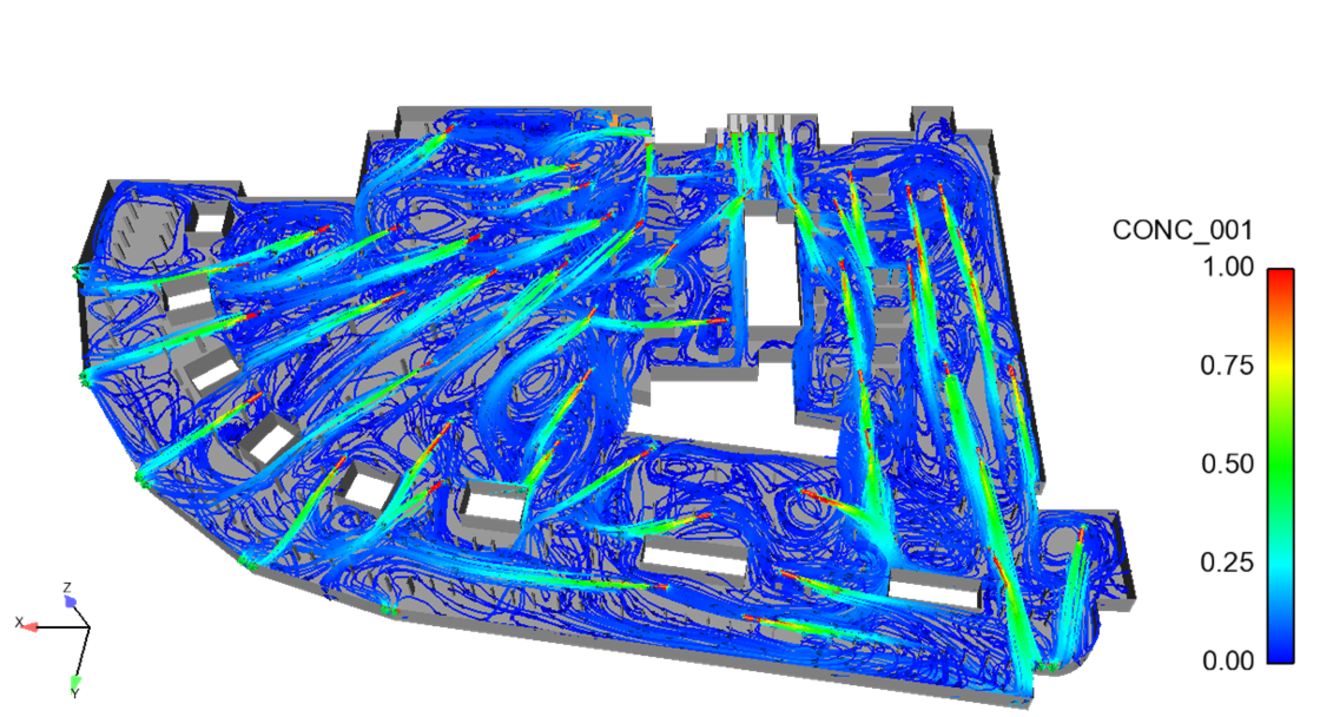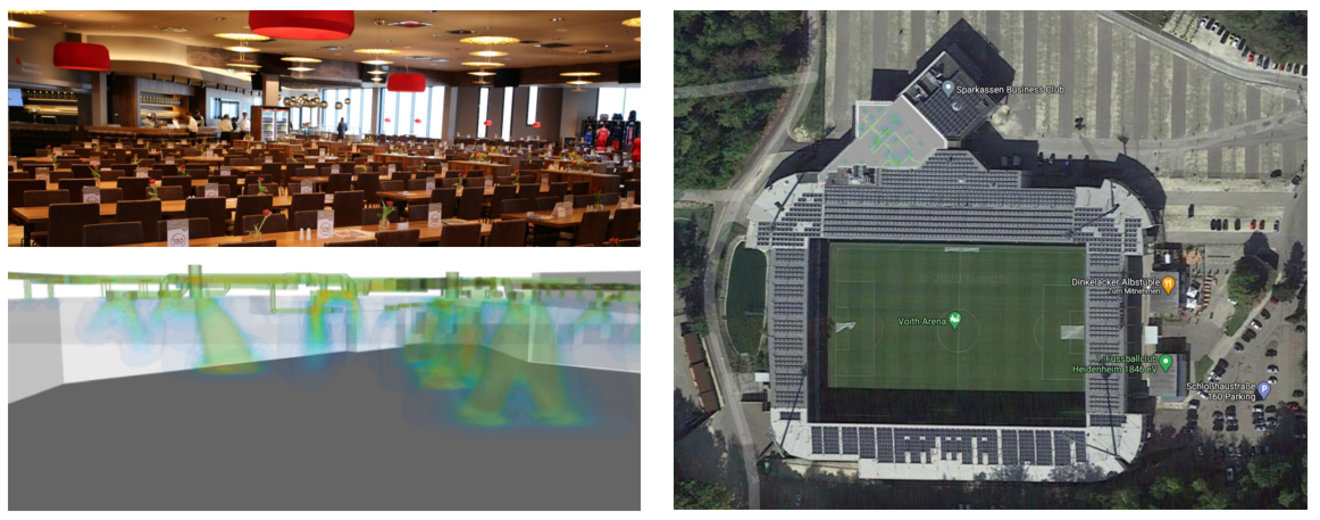Technical building equipment (TGA)

Interior
In the interior, the flow conditions, heat distribution, mass transfer processes such as the dispersion of pollutants or the CO2 concentration in the air and the air conditioning can be calculated.
Depending on the requirements, the calculations can be either steady-state or transient (time-varying).
Thermal comfort, air quality, concentration of pollutants, humidity and the interaction of the individual components for conditioning the room can be evaluated.
In particular, heating and cooling concepts, mixed air concepts, fresh air concepts, but also the behavior in case of fire (smoke extraction) can be considered.
The models consist of the 3D model of the room, the supply and exhaust air ducts, air slots, up to the furniture or persons in the room. Volume flows, heat sources (heating) and heat sinks (cooling plates) are used as boundary conditions. Also the heat emission of a person or several people with approx. 100 W per person can be described. The influence of solar radiation through the panes can be considered as a heat source, and even the formation of shadows can be described by columns. Transmission, absorption and reflection of the panes can be included in the model, as well as the transient course of the sun's position.
With slightly different approaches, the acoustic behavior of fans and blowers in the room can also be evaluated via simulations.

Outdoor space (flow around the building)
The pressures at building openings such as doors and windows in windy conditions can be determined by means of external circulation. It is also possible to determine the dispersion or dilution of emissions, e.g. from chimney systems, and to determine the wind loads on the building itself or on attachments and superstructures such as facades, solar systems, antennas, heat exchangers, condensers, filters, etc.
Components
Likewise, detailed components such as heat exchangers, heat storage, ice storage, burners can be calculated and optimized.
Indoor air quality and hygiene
The simulation can be used to determine the spread of bacteria and viruses as well as hazardous substances, carbon dioxide, and dusts through the room air.
Based on the concentration, it can be estimated whether there is a health hazard.
You can also find more information on this topic under the chapter Air purification on our homepage.
Weiteres Beispiel

